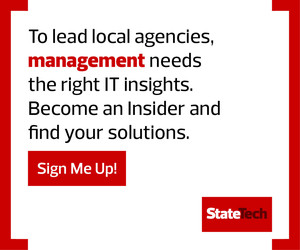What Is Facilities Management?
The ISO defines facilities management as “an organizational function which integrates people, place and process within the built environment with the purpose of improving the quality of life of people and the productivity of the core business.” Similarly, IBM defines facilities management as “the tools and services that support the functionality, safety, and sustainability of buildings, grounds, infrastructure and real estate.”
There is hard facilities management, which deals with physical aspects of a building, such as plumbing, wiring, and heating and cooling. There is also soft facilities management, which is about the use of a facility, focusing on tasks performed by people such as custodial services, lease accounting, catering, security and groundskeeping.
Essentially, facility managers must make sure a building and all of its components work properly.
For Dom Cottone, sustainability brand manager at IBM Public Sector, Government and Healthcare, facilities management in the public sector is centered on space, lease and asset management. Dean Ely, IBM’s Americas sales leader in AI applications asset management and the Internet of Things, adds that facilities management involves looking at all the work processes that go into the lifecycle of a building.
“‘How do I acquire it, configure it, maintain it, optimize utilization and ultimately dispose of it?” Ely says.
Operationally, facilities management is mostly the same in the public and private sector. However, Ely points out that corporations have more general flexibility than government organizations do, and corporations are able to plan long-term and make bigger investments, while agencies are often restricted by yearly budgets. State and local governments also have more regulations with which to comply, which can make the early adoption of emerging technologies difficult.
“State and local brings a higher sense of urgency and purpose around making sure you’re selecting the right technologies, deploying the right ones and having the right priorities,” Ely says.
DIVE DEEPER: The four pillars of modern workspace management.
What Are the Benefits of Effective Facilities Management for Governments?
Any well-run building is going to be safe and compliant, and will also minimize operating costs, help workers do their jobs well and help inhabitants use facilities effectively. For state and local governments, another benefit is transparency, given their tremendous responsibility to be open and accountable.
Cottone says he’s seen constituents in all government service areas demanding more transparency in recent years, and organizations have had trouble keeping up with these demands. Facilities managers who leverage tech platforms such as IBM’s TRIRIGA can collect and analyze data, then export it to their organizations’ public-facing websites to address inquiries from constituents.
Proper facilities management also helps organizations stay agile. The vast majority of the workforce went remote when the pandemic hit, and organizations faced the challenge of reinstating employees safely and effectively when they returned to the office.
The emergence of hybrid work meant that not everyone had to come back onsite, so organizations had more space than they really needed. Suddenly, space management became paramount. Effective facilities managers who know the ins and outs of a building can pivot as needed while remaining compliant.
“The paradigm has shifted to, ‘What do we do with all of this square footage? Do we continue to maintain it? Do we continue to modernize it with technology to support our workforce, or do we adapt it?” Cottone says.
Facilities management also helps organizations hit sustainability goals, since tools can measure emissions and identify inefficiencies.
DISCOVER: 3 best practices for safely returning government devices used at home.
What Technologies Support Facilities Management?
With so many moving parts, effective facilities management is difficult. For government organizations, the sheer size of operations makes it tougher, as municipalities need to manage hundreds of buildings across multiple sites. According to Cisco, “Historically, there has been little or no collaboration among IT, facilities, and physical security departments. This led to a piecemeal approach to technology investments, with different technology and tenant services in different buildings.”
As a result, many public administrations currently struggle with fragmented facility systems. Today, forward-looking public administrations are adopting a new approach. When government IT, facilities and physical security teams collaborate, they can each deliver better services at a lower cost than if they continued to operate in silos, experts say. Organizations can achieve this by leveraging facilities management technologies.
Facilities management technology solutions can modernize an organization’s operations, allowing them to create smart, integrated systems. Today, facilities managers use Internet of Things (IoT) tools to gather a wealth of data, then use software to analyze that data to reduce operational costs, improve building safety, detect anomalies and boost operational efficiency.
Facilities managers employ fault detection and diagnostics software that uses sensors to monitor a building’s operations. FDD software detects faults by reading sensors that can register a number of inputs within a building, including air quality, temperature and humidity, number of occupants, equipment failures, the levels of substances in liquid, gasses in the air, and pressure changes.
“With the proliferation of IoT, you have devices on equipment and buildings that are sensing and generating an explosion of new operational data,” Ely says.












